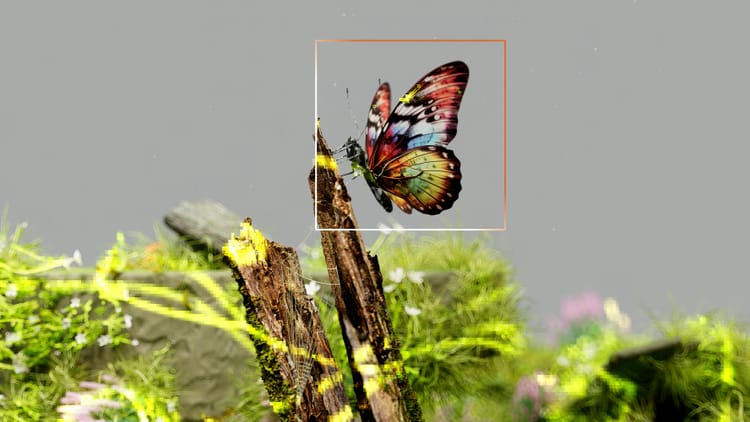AI is moving fast: are we ready for what’s next?

AI is racing ahead, reshaping industries overnight but are we asking the right questions about what it should do, rather than just what it can do? With AI evolving faster than we can regulate, are we still in control of the narrative?
It’s fascinating that, at this inflection point in AI’s universalization, the dominant conversation remains focused on models, agents, no-code interfaces, and the crazy speed of technological advancement. We’re in a relentless race to monetize, optimize, and claim territory in a landscape that’s shifting beneath our feet. And sure, capitalism fuels innovation: many of these advancements will be extraordinary.
But the scope of discussion feels strangely, even willfully, narrow.
As someone who has followed AI’s rise in design and tech, I keep wondering if we are focusing too much on the ‘how’ and not enough on the ‘why’? That said, I also see real care and thoughtful intent among many in the AI space. There are brilliant minds genuinely working to build AI responsibly, but the challenge is ensuring that this care translates into outcomes that benefit everyone and not just a select few.
Enjoying this? Subscribe for free to get insights straight to your inbox..
Who’s in the Room?
While a select, highly technical, economically advantaged few shape the next decade of AI-driven reality, the vast majority of people are simply getting on with their lives. They’re not part of the conversation. They’re not in the rooms where the future is being decided. Jobs will be lost. The social fabric will reconfigure in ways we’ve yet to map out. And yet, the prevailing discourse remains trapped in a self-referential loop of performance benchmarks and market readiness.
Sam Altman has described a future where AI-powered software engineering agents, functioning as junior-level virtual coworkers, could eventually scale to millions across industries. He envisions AI as an economic force akin to the transistor, permeating every sector and becoming indispensable while also being largely invisible in daily life. However, he acknowledges that AI’s impact will be uneven, with certain industries changing dramatically while others remain relatively untouched. His insights underscore the magnitude of transformation AI will bring, both in labor markets and in scientific progress.
Sam Altman’s vision raises critical questions: How do we ensure that this transformation benefits all, rather than deepening existing inequalities?
AI’s Economic Impact
We often speak of AI as a seismic shift, yet even as AI integrates into everything, from logistics to medicine to creative fields, we remain fixated on its technical prowess rather than its societal implications. What if we looked beyond the technology itself and started exploring what this means for real people?
- A 2023 report by Goldman Sachs found that AI automation could impact 300 million full-time jobs globally. That’s nearly a quarter of all work hours in the U.S. and Europe combined. Are we prepared for this shift?
- The World Economic Forum’s Future of Jobs report suggests that while AI will create new jobs, the transition will be painful, especially for those in roles that don’t lend themselves to rapid up-skilling.
- A study by MIT and Stanford found that the productivity boost from AI is massive: 14% on average. However it primarily benefits high-skilled, tech-savvy workers, widening economic disparities.
The release of the Anthropic Economic Index is a step toward understanding AI’s real-world impact. Its initial findings reveal that AI’s influence is currently concentrated in software development and technical writing. Over a third of occupations already incorporate AI into at least a quarter of their tasks. Yet AI usage leans more toward augmentation (57%) than outright automation (43%), suggesting that, at least for now, humans remain central to the process. However, AI’s economic impact is disproportionately felt, favoring mid-to-high wage occupations while leaving both the lowest- and highest-paid roles relatively untouched. They shared some really interesting data worth exploring:

The challenge now is not just to expand AI’s exciting capabilities but to ensure that it serves humanity in a way that is equitable, ethical, and forward-looking. There’s an urgency to this: AI is accelerating scientific progress, reshaping labor markets, and upending economic structures in ways we’re only beginning to comprehend.
Sam Altman makes the point that the price of many goods will plummet as intelligence and energy costs decline, while the value of scarce resources like land, luxury goods, and uniquely human experiences may skyrocket.
I want to emphasise that this isn’t all going to be bad, a lot of great things are going to emerge as well: my call is for us to meaningfully engage in the conversation so it can be better.
The Bigger Picture: AI for Good
One of the biggest challenges ahead? Figuring out how to ensure that AGI benefits everyone. While history suggests that technological progress improves overall economic prosperity, equality is not a foregone conclusion. Let’s explore ideas like universal AI access to ensure that intelligence is a shared resource rather than a concentrated power.
While much of AI’s attention is focused on efficiency and productivity, visionaries like Refik Anadol are proving that AI can also be a tool for reimagining art and storytelling. Meanwhile, climate innovators are using AI to tackle some of humanity’s biggest challenges, from forecasting extreme weather to optimizing renewable energy.
Check out Refik Anadol’s AI-generated installations: massive, immersive, impossible landscapes sculpted from data.
At the same time, AI is making significant strides in climate action and green technology. AI-driven climate models are helping scientists better predict extreme weather events, giving policymakers the tools to mitigate disaster. Organizations like ClimateAI use predictive analytics to help farmers adapt to changing climate conditions, improving food security. Projects like Microsoft’s AI for Earth initiative support AI-driven solutions in conservation, sustainability, and carbon capture.
How Do We Make AI Work for Everyone?
As a design community, we have a responsibility to engage and to push beyond the tech, and to ask harder questions. What does AI’s expansion mean for human dignity? For creative autonomy? For the delicate, intricate ecosystems of our societies, our economies, our very existence?
The challenge now is to make this technology useful into the real world and serve it well. Not just the world inside tech circles, but the world of farmers, teachers, nurses, artisans, and communities whose voices haven’t yet been heard in this revolution.
Let’s evolve the UX paradigm while keeping its core principle intact: people & planet first. It’s been so encouraging and wonderful to see designers like Bettina D'ávila share their thoughts on Why AI (desperately) needs designers.
The future is unfolding, but we still get to decide what kind of future we want it to be. What do you think? How should AI be designed to truly serve people & planet?
Enjoy this awesome (albeit slightly older) talk by Tristan Harris and Aza Raskin:







